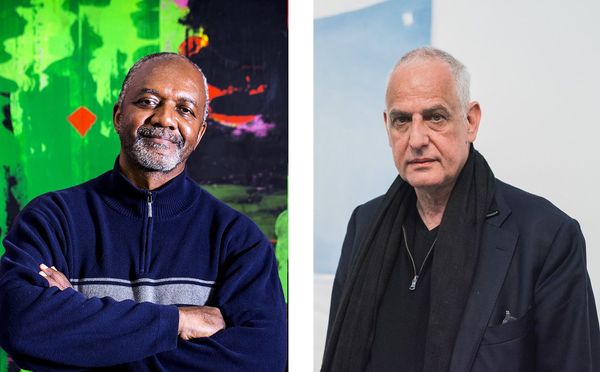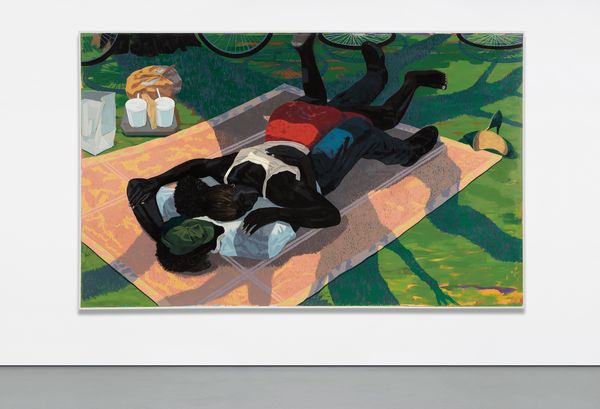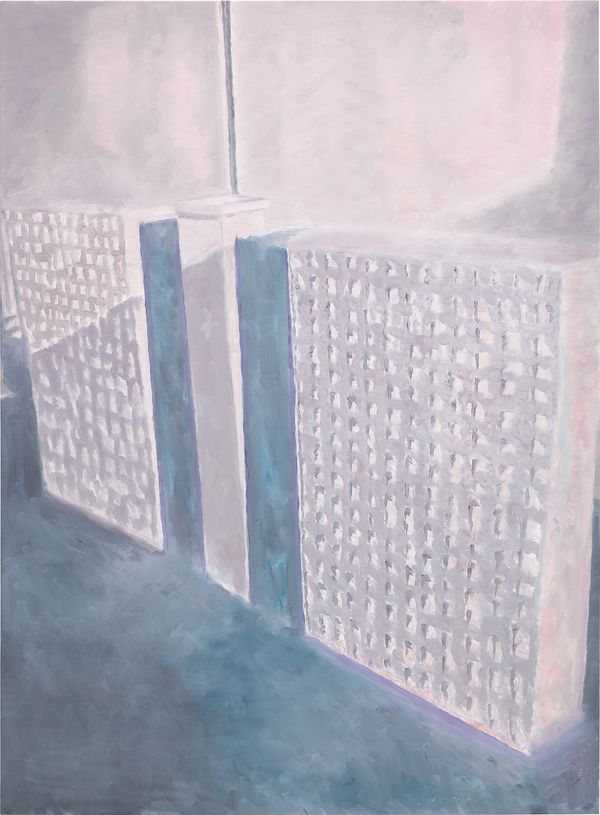Left: Kerry James Marshall, photographed by Felix Clay; Right: Luc Tuymans, photographed by Alison Slattery
Kerry James Marshall is lauded as one of today's most significant painters, an accolade he undoubtedly shares with close friend and fellow artist Luc Tuymans. While operating in two wholly different socio-political and historical contexts — Marshall lives and works in Chicago, Tuymans in Belgium — both share a similar interest in probing the failures of representation and challenging the status quo. And while both approach the arsenal of painting from different formal angles, their common interest in confronting the medium and history of painting by subtly imaging the undercurrents of power is a uniting thread between their oeuvres.
Marshall's singular artistic vision has given rise to paintings that are both formally rigorous and undoubtedly relevant and timely. His groundbreaking oeuvre was recently subject to the major mid-career survey Kerry James Marshall: Mastry that was co-organized by the Museum of Contemporary Art, Los Angeles, the Museum of Contemporary Art, Chicago, and The Metropolitan Museum of Art, New York, in 2016 and 2017.
In a conversation between the two artists in 2005, Luc Tuymans observed of his first encounter with Marshall's work, "When I saw your first show at Jack Shainman's old gallery in New York, in 1995, my reaction was intrigue with how direct the visuals were: the people in the pictures were very black, coal black; the element of shadow either did not exist or was impenetrable and contained, solid; most of the compositions were made as if looked upon from above. But at the same time, there was this element of simultaneity, where a moment propels itself within an immobilized world."
Kerry James Marshall Untitled (Blanket Couple), 2014
Identifying as a history painter, Marshall draws attention to the failures of representation, specifically with regard to the ways African Americans have been marginalized both as subjects and makers within art history. Marshall's Untitled (Blanket Couple), 2014, takes a key position in the artist's programmatic agenda of probing the idea and history of representation. While the painting is reminiscent of Édouard Manet’s Le Déjeuner sur l’herbe, 1862-1863, Musée d’Orsay, Paris, it is firmly situated within the contemporary here and now. In his depiction of a black couple affectionately entangled on a blanket on the grass, Marshall puts forth a scene that is intimate in touch, yet voyeuristic in scale — reminding us of the universality of human pleasures, as well as of the complicated nature of representation.
The primary questions of what art is still revolve around questions of representation: to represent or not to represent.
— Kerry James Marshall
As Marshall explained, "As a painter, I'm interested in the configuration of parts because I want to be able to use that at will. I don't want that to be something that only happens by chance. I want it to be something that I can construct, control and calibrate."
While Tuymans' Model, 2012, visually couldn't be more different, it similarly draws our attention to the pictorial surface to remind us, as its title implies, that what is depicted is only an approximate, constructed visual model of reality. "On my first encounter with your paintings, at the Renaissance Society in 1995," Marshall remarked, "the thing that I left there feeling was that they were perfect pictures. Like Gerhard Richter's best work, it declares to the viewer, I am a picture."
Luc Tymans Model, 2012
Exemplary of Tuymans' concern with themes of history, power and memory, Model alludes to the disenfranchised communities specific to the social fabric of Chicago's South Side where Marshall has maintained a studio since 1987. Painted in 2012, just a year after Tuymans' seminal mid-career survey exhibition at the Museum of Contemporary Art, Chicago, it depicts the Robert Taylor Homes, a notorious housing project in the neighborhood of Bronzeville that also inspired Marshall's breakthrough Garden Project series from 1994-1995.

Robert Taylor Homes during construction, early 1960s
Once heralded as the "Black Metropolis," this neighborhood featured the largest concentration of public housing high-rises in the county. Yet governmental support soon became virtually non-existent and housing projects such as Robert Taylor Homes came into sharp focus for problems related to narcotics, crime, violence and the perpetuation of poverty. It is through a process and aesthetic of detachment that Tuymans confronts history and memory with remarkable subtlety and ambiguity.
Both Marshall and Tuymans effectively deal with the question of how images shape our perception of reality, putting forth powerful paintings that are visually stunning as they are timely. As Marshall indeed noted in conversation with Tuymans, "We operate with a very similar consciousness of what we're doing, and I think our aims are very close together."
All quotes from "Luc Tuymans and Kerry James Marshall", Bomb Magazine, July 1, 2005, online


